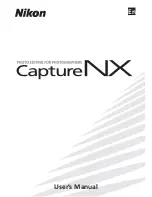
Glossary
ExtremeWare XOS 11.1 Concepts Guide
472
TCN
Topology change notification. The TCN is a timer used in RSTP that
signals a change in the topology of the network.
TCP
Transmission Control Protocol. Together with Internet Protocol (IP),
TCP is one of the core protocols underlying the Internet. The two
protocols are usually referred to as a group, by the term TCP/IP. TCP
provides a reliable connection, which means that each end of the
session is guaranteed to receive all of the data transmitted by the other
end of the connection, in the same order that it was originally
transmitted without receiving duplicates.
TFTP
Trivial File Transfer Protocol. TFTP is an Internet utility used to
transfer files, which does not provide security or directory listing. It
relies on UDP.
transit node
In EAPS, the transit node is a switch, or node, that is not designated a
master in the EAPS domain ring.
U
UDP
User Datagram Protocol. This is an efficient but unreliable,
connectionless protocol that is layered over IP (as is TCP). Application
programs must supplement the protocol to provide error processing
and retransmitting data. UDP is an OSI Layer 4 protocol.
unicast
A unicast packet is communication between a single sender and a
single receiver over a network.
untagged VLAN
A VLAN remains untagged unless you specifically configure the IEEE
802.1Q value on the packet. A port cannot belong to more than one
untagged VLAN using the same protocol.
V
virtual link
In OSPF, when a new area is introduced that does not have a direct
physical attachment to the backbone, a virtual link is used. Virtual
links are also used to repair a discontiguous backbone area.
virtual router
In the Extreme Networks implementations, virtual routers allow a
single physical switch to be split into multiple virtual routers. Each
virtual router has its own IP address and maintains a separate logical
forwarding table. Each virtual router also serves as a configuration
domain. The identity of the virtual router you are working in
currently displays in the prompt line of the CLI. The virtual routers
discussed in relation to Extreme Networks switches themselves are
not
the same as the virtual router in VRRP.
In VRRP, the virtual router is identified by a virtual router (VRID) and
an IP address. A router running VRRP can participate in one or more
virtual routers. The VRRP virtual router spans more than one physical
router, which allows multiple routers to provide redundant services to
users.
T
(continued)
Summary of Contents for ExtremeWare XOS 11.1
Page 16: ...Contents ExtremeWare XOS 11 1 Concepts Guide 16...
Page 20: ...Preface ExtremeWare XOS 11 1 Concepts Guide 20...
Page 21: ...1 Using ExtremeWare XOS...
Page 22: ......
Page 78: ...Managing the ExtremeWare XOS Software ExtremeWare XOS 11 1 Concepts Guide 78...
Page 168: ...Virtual LANs ExtremeWare XOS 11 1 Concepts Guide 168...
Page 200: ...Policies and ACLs ExtremeWare XOS 11 1 Concepts Guide 200...
Page 252: ...Security ExtremeWare XOS 11 1 Concepts Guide 252...
Page 265: ...2 Using Switching and Routing Protocols...
Page 266: ......
Page 294: ...Ethernet Automatic Protection Switching ExtremeWare XOS 11 1 Concepts Guide 294...
Page 354: ...Extreme Standby Router Protocol ExtremeWare XOS 11 1 Concepts Guide 354...
Page 416: ...IP Multicast Routing ExtremeWare XOS 11 1 Concepts Guide 416...
Page 417: ...3 Appendixes...
Page 418: ......
Page 432: ...Software Upgrade and Boot Options ExtremeWare XOS 11 1 Concepts Guide 432...
















































